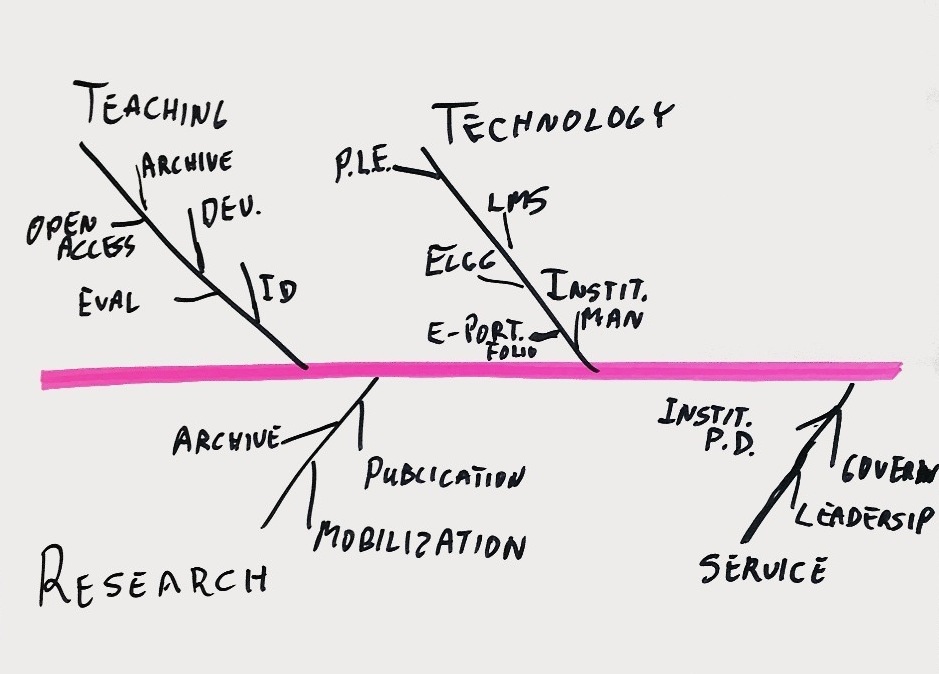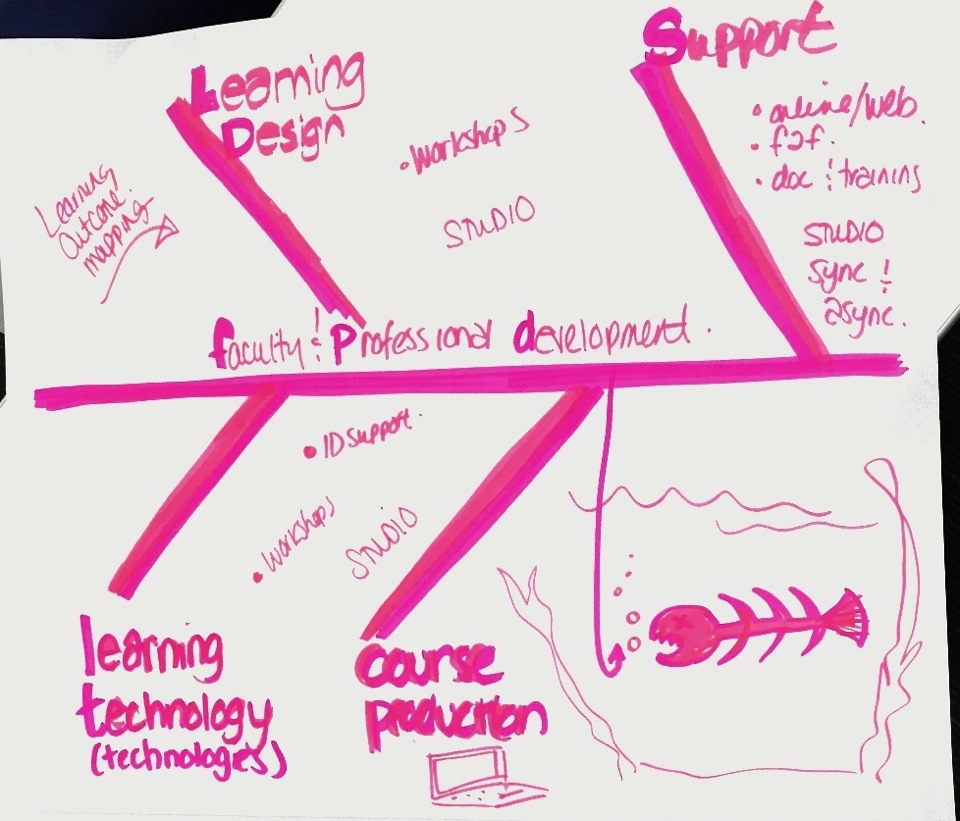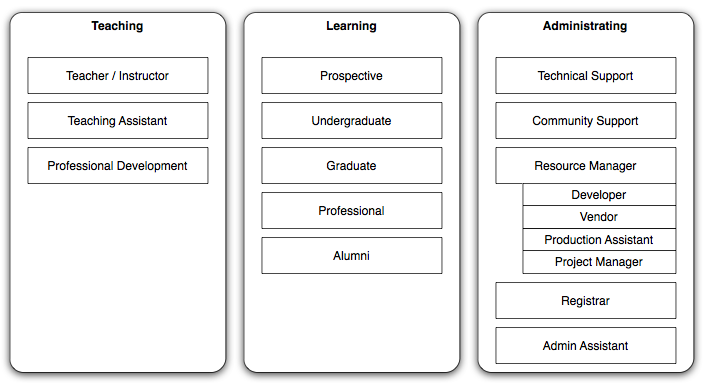I was fortunate to be able to present a session at CNIE 2014, to share some of the campus engagement stuff we did as part of our long LMS replacement project. I tried to stay away from the technology itself, and focus on the engagement process. Full slide deck is available online, and fuller reports describing the engagement and findings are still available online, as well as the GitHub repository of LMS RFP requirements1.
Basically, I described the process, which started as a conventional inventory of shiny things. We then realized that we had the opportunity to have a more meaningful discussion as a campus community, and the conversation shifted to more interesting topics such as how people actually teach and learn, and what they actually care about.
I billed this as a hands-on session, and was rewarded with a coveted 90 minute slot. The first activity was to have participants try working through building a “fishbone diagram”, based on the research of Jeffrey Nyeboer. It’s a useful way of organizing the description of organizational attributes – things that make up the workflow of an organization – in a way that’s more meaningful than simple word clouds.

(photo by the awesome and talented Irwin DeVries)
It’s a process we used with faculty leadership across our campus, to describe what they mean by “teaching and learning”. We provided them with a simplified template as a null hypothesis, and asked each faculty to correct/complete/adapt/recreate it as needed to describe what they care about. The beauty of this kind of diagram is that it’s pretty inclusive – it’s easy to work on with a group, and when there is disagreement about something that’s on it, or something that has been missed, it is easy to hand people markers to hack away at the diagram until they like it. Used that way, it’s an interesting way to build consensus around what things an organization cares about, which is something that often triggers conflict and defensive postures. The cool thing about the engagement model is that it has lead to some much deeper discussions about things that are much more interesting than what they need from an LMS – it’s opened the door to ongoing discussions about teaching and learning that would have been difficult, impossible, or unavailable otherwise.
Here’s the simplified fishbone we used as a starting point for each faculty on campus:

Here’s one of the fishbones that was adapted by one of our faculties:2

And the fishbones that some of the session participants came up with, to describe various contexts:




In the session, I also talked about how we identified the various types of people/groups that make up our community, which is surprisingly difficult at a complex organization such as a university.

The session went really well, even though it was an “LMS session” at a time when we’re finally getting some movement away from The LMS As All That There Is™ – but this engagement model would work well (and has worked well) for anything – the LMS change on our campus just provided us with the Macguffin to get the plot moving.
- but I would strongly recommend that you don’t use the full set – this was far too much for everyone, and with enough items, things basically cancel each other out. pick a subset of items that you really care about, and have the respondents tailor their responses to that, rather than the whole shooting match. at a high level, they’re essentially all the same thing anyway… [↩]
- we provided these via copies of documents in Google Docs, so people could happily add/edit/remove stuff without worrying about access or tools [↩]






